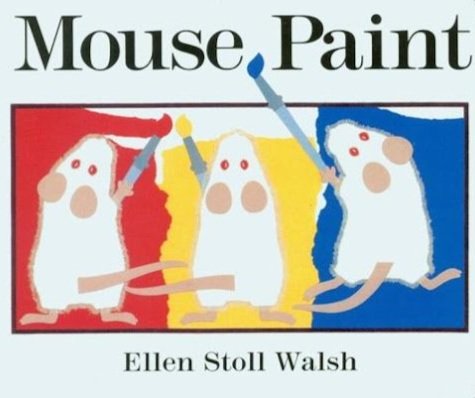The Reading Nook: Mouse Paint
Mouse Paint can be found in the Duplin County library system. If your local branch doesn’t have it, give them a few days and they can usually locate it for you!
Hello, and welcome back to “The Reading Nook” where the focus is using great stories to create special moments between caregivers and the young children they love!
So, maybe you’re not a fan of mice. And maybe you’re not even a fan of cats. But when Ellen Stoll Walsh puts them together along with some pots of paint, your child is sure to enjoy it!
Mouse Paint is a simple and delightful story for young children, and is one that lends itself to lots of fun and creativity. When three mice stumble upon some pots of paint, they immediately think it’s “mouse paint” and hop right in. Dripping puddles and dancing around, they make some interesting discoveries about color. And after reading, children will be ready to make those same discoveries themselves!
Photo provided by Tammie Blackburn
BEFORE YOUR READ: When looking at the front cover, have your child talk about what they notice. Ask questions like “How many mice do you see and what do you think they’re doing?” Talk to them about animals that may hunt for mice and ways that mice might hide from these animals. Talk about the colors of paint you see on the cover and then ask your child to name as many other colors as they can that are not on the cover.
WHILE YOU READ: The text in this story is very short and simple, so have your child talk to you about what’s happening on some of the pages before you actually read the words. Each time that a painted mouse begins to splash around in a puddle of different colored paint, let your child predict what is going to happen on the next page. At the end of the story, ask them why they think it was important to leave some white because of the cat.
AFTER YOU READ:
Now, it’s time to play around with color! There are lots of ways this can be done -- with markers, paint, chalk … but one of the easiest and most fun is simply using food color and water. You can start out with a cup of red, a cup of yellow, and a cup of blue just like the mouse paint in the story. Using clear cups is best, and you’ll want to have some extra ones on hand. You and your child can mix the colors by pouring some from two cups into an empty cup to see what happens just as the mice in the story did. Of course, there’s no need to stop there. After making orange, green, and purple you’ll have SIX colors to play around with instead of just three. So keep mixing and see what happens! For example, mix blue and green to make aqua or blue and purple to make indigo. The shades and combinations are endless.
Do be aware that food color can stain clothes, so wear something that you won’t mind messing up
After getting cups of several different colors, another fun way to use this colored water is with medicine droppers/pipettes and white paper towels. Let your child drop a drop of color onto a paper towel and watch it bleed and run. Then, drop a different color close by and watch the colors bleed together. They can continue this way for quite a long time, and come up with some really pretty creations! You can purchase packs of plastic pipettes at Walmart fairly cheaply, but you can also do the same activity with plastic straws. It takes a bit more patience and control, but learning how to slightly lift their finger off the straw to make drops is great practice for fine motor skills!
Talk with your child about how lots of animals rely on their colors to help them hide from their predators, just like these white mice could hide on the white paper from the cat. Explain camouflage and do research to find animals that do it well. Here is a link to a video that explains it well to children: https://www.youtube.com/watch?v=YOIRci0CKzg
I hope you enjoyed reading and playing around with Mouse Paint. If your child was especially fond of the mice, you may also want to check out Mouse Shapes and Mouse Count, also by Ellen Stoll Walsh.
Happy reading, and, from Emilie Buchwald, always remember, “Children are made readers on the laps of their parents.” See you next week with another great book!
Photo provided by Tammie Blackburn





